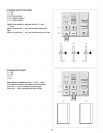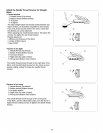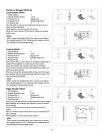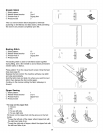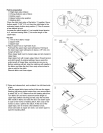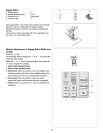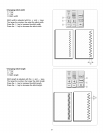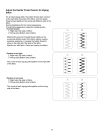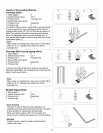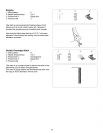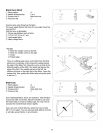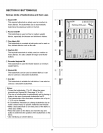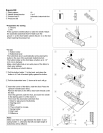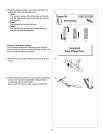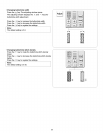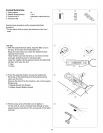
Variety of Overcasting Stitches
Overedge Stitch
Stitch pattern: 8
Needle thread tension 3 to 7
Presser foot C: Overedge foot
Brush holder seam guide
Presser foot A: Zigzag foot
Pressure dial 3
This stitch is often used as a seam finish to prevent fraying.
If using a zigzag foot, start overedging with the leftmost
needle position about 1/8" (0.3 cm) from the raw edge of a
fabric. The right tip of the stitch should just clear the raw
fabric. For lightweight fabrics, use the overedge foot. To
sew, line the fabric edge up with the inner side of the brush
holder seam guide _.
Note:
When using an overedge foot, make sure to set the stitch
width at 5 to 7.0, otherwise the needle may hit the
overedge foot.
Overedge Stitch (using zigzag stitch)
(_ Stitch pattern: 6
Needle thread tension 3 to 7
Presser foot C: Overedge foot
Brush holder seam guide
(_ Presser foot A: Zigzag foot
(_ Pressure dial 3
To prevent raw edge of fabric from raveling, overcast the
edge with zigzag stitch. It is the fastest way to finish the raw
edge of most woven fabrics.
Note:
When using an overedge foot, make sure to set the stitch
width at 5 to 7.0, otherwise the needle may hit the
overedge foot.
Multiple Zigzag Stitch
(_ Stitch pattern: 7
Needle thread tension 3 to 6
Presser foot A: Zigzag foot
Pressure dial 3
S
f
®
J
®
J
J
Y
®
• Seam finishing
This stitch is used to finish the seam allowance on
synthetics and other fabrics that tend to pucker. The stitch
is also excellent for darning and mending tears.
Place your fabric to allow a 5/8" (1.5 cm) seam. Trim
excess close to stitching. Be careful not to cut the stitches.
• Mending
Position the tear under the needle so that the stitch
catches both sides.
/
_r
/
J
33



